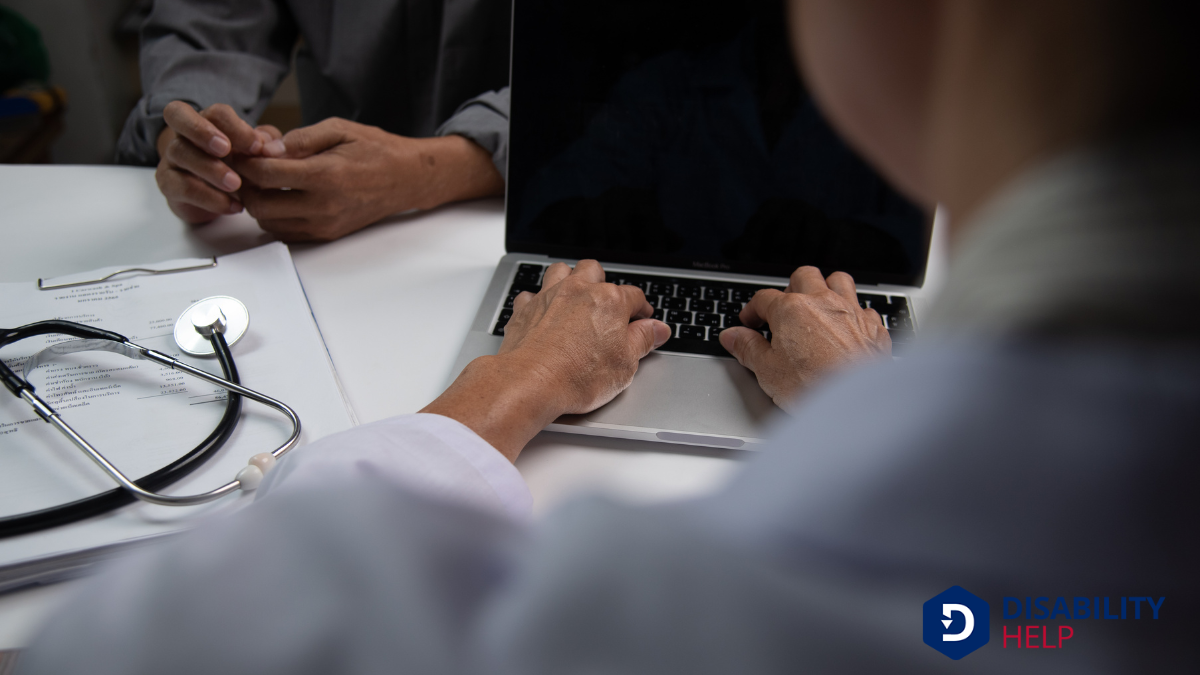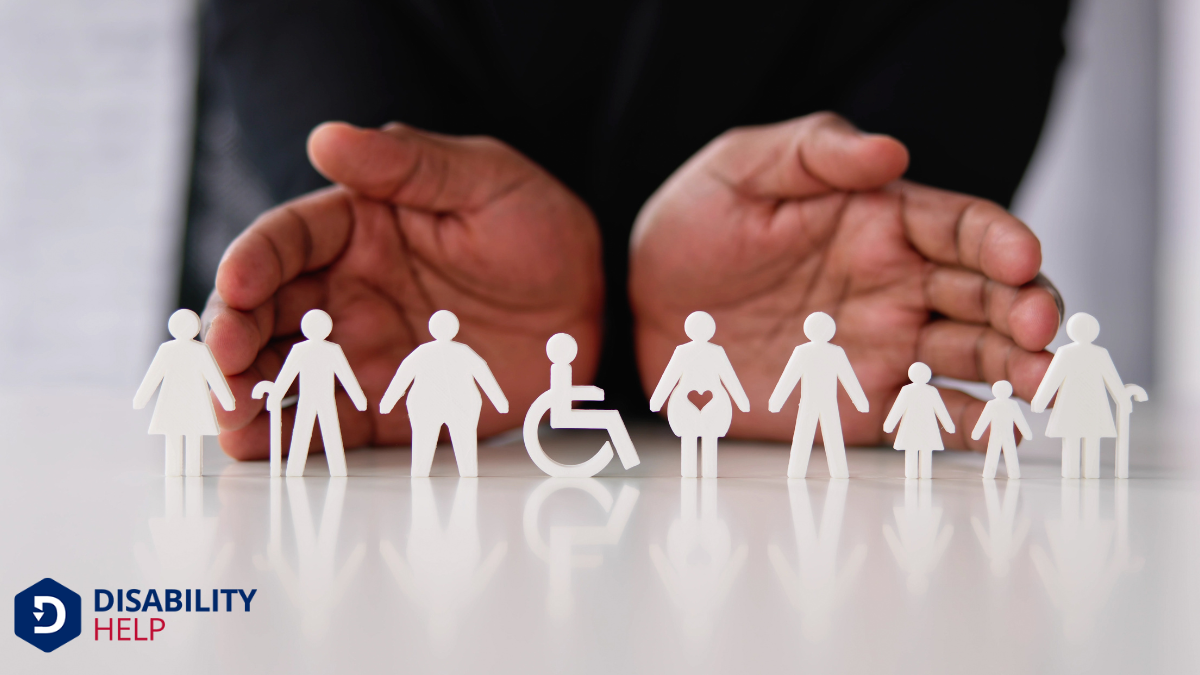As we explore the differences between disability discriminationUnfair treatment of individuals based on their disability in areas such as employment, education, an... and medical discrimination, it's important to recognize how each uniquely impacts individuals' lives. While both forms of discrimination challenge equality, disability discrimination often occurs in workplaces, schools, and public spaces, whereas medical discrimination arises within healthcare settings. Each has distinct legal protections and societal implications. Understanding these differences is essential in promoting inclusivity and ensuring fair treatment for all. Let's unpack this further.
Key Takeaways
- Disability discrimination involves unfavorable treatment based on a person's disability, while medical discrimination relates to unfair treatment due to medical conditions.
- Disability discrimination is illegal under the Americans with Disabilities Act (ADA)A U.S. law that prohibits discrimination against individuals with disabilities in all areas of publi..., ensuring equal opportunities through reasonable accommodationsModifications or adjustments in healthcare settings to support patients with disabilities..
- Medical discrimination occurs in healthcare settings, affecting access to necessary treatments and overall health outcomes.
- Disability discrimination is often seen in workplaces, education, and public spaces, whereas medical discrimination primarily affects healthcare access.
- Both discrimination types hinder inclusivity, but disability discrimination focuses on societal access, while medical discrimination impacts healthcare equityFairness and justice in the way people are treated, especially in the allocation of resources and op....
Defining Disability Discrimination
Disability discrimination occurs when individuals are treated unfavorably due to a disability. We might see this happen in workplaces, schools, or public spaces where people with disabilities face barriers that others do not.
It's vital we grasp that this form of discrimination isn't just unfair; it's illegal under laws like the Americans with Disabilities Act (ADA). The ADA aims to guarantee equal opportunity and access by requiring reasonable accommodations. For instance, providing sign language interpreters or wheelchair-accessible facilities.
Together, we can recognize these unfair practices and advocate for change. By understanding the essence of disability discrimination, we empower ourselves to challenge it, fostering a more inclusive society where everyone can thrive, regardless of their physical or mental capabilities.
Understanding Medical Discrimination

Let's examine what medical discrimination means and how it affects our access to healthcare.
Medical discrimination happens when individuals are treated unfairly by healthcare providers due to their medical conditions, leading to unequal access to necessary treatments.
As we explore this issue, we must consider its significant impact on overall health outcomes and aim for equitable care for everyone.
Defining Medical Discrimination
Although we often hear about discrimination in various forms, medical discrimination remains a less discussed yet critical issue.
Let's define it together. Medical discrimination occurs when individuals face unfair treatment based on their medical conditions. This can manifest in many ways, such as being denied medical services, facing bias from healthcare providers, or experiencing differential treatment in medical settings.
It's essential to acknowledge that medical discrimination isn't limited to specific conditions; it can affect anyone with a health issue, whether chronic or temporary.
Impact on Healthcare Access
When we talk about medical discrimination, it's vital to contemplate how it directly impacts healthcare access. Discrimination can manifest in unequal treatment based on race, gender, or socioeconomic status, leaving some of us marginalized and underserved.
We see barriers that prevent equitable access to necessary services, leading to delays in diagnosis or treatment. This can exacerbate existing health issues and increase disparities in health outcomes among different communities.
Let's consider how these barriers affect trust in the healthcare system. When we feel sidelined or mistreated, our confidence in seeking care diminishes. This hesitancy can lead to avoiding necessary medical attention, further distancing us from achieving ideal health.
Addressing medical discrimination is fundamental to ensuring everyone receives fair and compassionate care.
Legal Frameworks Governing Discrimination
In the domain of discrimination, understanding the legal frameworks that govern both disability and medical discrimination is essential for ensuring fair treatment and equal opportunities.
We need to recognize these frameworks to protect individuals and promote inclusivity.
- Americans with Disabilities Act (ADA): This law prohibits discrimination against individuals with disabilities in all areas of public life, ensuring access and accommodations in employment, schools, transportation, and more.
- Rehabilitation Act of 1973A U.S. law that prohibits discrimination based on disability in federal programs and services, inclu...: Similar to the ADA, this act prevents discrimination on the basis of disability in programs receiving federal funding.
- Affordable Care Act (ACA): This includes provisions that prohibit discrimination in healthcare settings based on pre-existing conditions, ensuring equal accessThe principle that all individuals, including those with disabilities, should have equal opportunity... to medical services.
Common Examples of Disability Discrimination
Having explored the legal protections against discrimination, it's important to recognize how disability discrimination manifests in everyday scenarios.
Let's consider a few common examples. In the workplace, an employer might refuse reasonable accommodations for an employee with a disability, like flexible hours or accessible workstations. This refusal can unfairly limit that person's ability to perform their job effectively.
In education, a school might fail to provide necessary support for a student with a disability, which can hinder their learning experience.
Sometimes, public spaces aren't accessible, preventing individuals with disabilities from fully participating in community life.
We might also encounter discriminatory attitudes or assumptions that people with disabilities are less capable.
Recognizing these examples helps us endeavor toward a more inclusive society.
Instances of Medical Discrimination in Society

Although often overlooked, medical discrimination remains a significant issue in our society. It affects individuals based on their medical conditions, influencing how they're treated in various settings.
Let's consider some common instances:
- Healthcare Access: Some patients face barriers to receiving necessary treatments due to biases against their medical conditions or perceived lifestyle choices. This can result in delayed or inadequate care.
- Employment: Employers may discriminate against individuals with certain medical conditions, not hiring or promoting them due to misguided beliefs about their capabilities or potential costs.
- Insurance Policies: Insurers might deny coverage or charge higher premiums based on a person's medical history, impacting their financial stability and access to healthcare.
Addressing these issues requires awareness and proactive policy changes to guarantee fair treatment for everyone.
Impact on Individuals and Communities
When we examine the impact of medical discrimination, it's clear that individuals and communities suffer significant consequences. People facing this discrimination often experience diminished mental and physical health. For instance, they might avoid seeking care, fearing bias or dismissal. This creates a cycle where untreated conditions worsen over time.
Communities, too, bear the burden. Medical discrimination can lead to mistrust in healthcare systems, making it harder for public healthThe science of protecting and improving the health of people and their communities, focusing on prev... initiatives to succeed. We see an increase in health disparities and a decrease in overall community wellness.
Economically, it strains resources as preventable issues escalate. Ultimately, our collective well-being depends on equitable healthcare. Recognizing the signs and consequences of medical discrimination is essential in fostering healthier, more inclusive societies.
Strategies for Addressing Disability and Medical Discrimination
Addressing disability and medical discrimination requires concrete strategies that promote equity and inclusionThe practice of creating environments in which any individual or group can be and feel welcomed, res... within healthcare systems.
We can make a significant impact by adopting practical approaches that enhance understanding and guarantee fair treatment for all individuals.
Here are three key strategies:
1. Education and Training: We need to educate healthcare providers about the unique challenges faced by individuals with disabilities and medical conditions, fostering empathyThe ability to understand and share the feelings of another, particularly important in understanding... and awareness.
2. Policy Development: Implementing policies that explicitly prohibit discrimination can create a more inclusive environment.
We should advocate for transparent guidelines and enforcement mechanisms.
3. Accessible Communication: Guaranteeing that healthcare information is available in accessible formats allows everyone to make informed decisions about their care.
It’s essential to provide resources in multiple languages and formats.
Together, we can drive positive change.
Promoting Inclusive and Equitable Environments

Creating inclusive and equitable environments in healthcare means we must actively dismantle barriers that hinder access and participation for all individuals.
It’s vital to recognize that not everyone starts from the same place or needs the same things. By listening to diverse voices, we can understand the unique challenges faced by individuals with disabilities or medical conditions.
Let's guarantee that our policies and practices reflect empathy and flexibility, accommodating various needs.
We’ve got to prioritize training for healthcare professionals, focusing on sensitivity and awareness. This approach empowers them to provide respectful and individualized care.
Advocating for policy changes that promote accessibilityThe design of products, devices, services, or environments to be usable by people with disabilities.... and equity is also essential. Together, we can create spaces where every person feels valued and receives the care they deserve.
Frequently Asked Questions
How Can Individuals Identify if They Are Experiencing Discrimination?
We can identify discrimination by recognizing patterns of unfair treatment or exclusion. Let's ask ourselves: Are we being treated differently because of a condition or disability? Document incidents and seek advice from trusted sources to understand our rights.
Are There Specific Industries Where Discrimination Is More Prevalent?
We often notice discrimination more in industries like healthcare, finance, and tech. It's essential we educate ourselves and remain vigilant. Let's work together to identify and challenge these biases, ensuring fair treatment for everyone.
What Role Do Cultural Norms Play in Discrimination?
Cultural norms shape our perceptions and can lead to discrimination. When society values certain traits over others, it affects behaviors and policies. By recognizing and questioning these norms, we can work towards a more inclusive environment.
How Does Intersectionality Affect Discrimination Experiences?
Let's explore how intersectionalityThe theory that various forms of social stratification, such as race, gender, and disability, do not... shapes discrimination. We experience unique discrimination based on overlapping identities, like race, gender, and disability. Recognizing this complexity helps us understand diverse experiences and work towards more inclusive environments. Together, we can drive change.
Can Personal Biases Contribute to Discrimination in the Workplace?
Yes, personal biases can definitely contribute to workplace discriminationUnfair treatment of employees based on disability, including hiring, promotion, job assignment, term.... We might unintentionally let stereotypes influence our decisions. It's essential we become aware of our biases, actively challenge them, and promote an inclusive environment for everyone.
Conclusion
As we've explored, understanding the nuances between disability and medical discrimination helps us better advocate for fairness. By recognizing these distinct yet overlapping issues, we can work towards more inclusive environments. Let’s commit to challenging biases and supporting equitable treatment for all individuals, whether in workplaces, schools, or healthcare settings. Together, we can promote a more just society where everyone has the opportunity to thrive, regardless of their disabilities or medical conditions.






